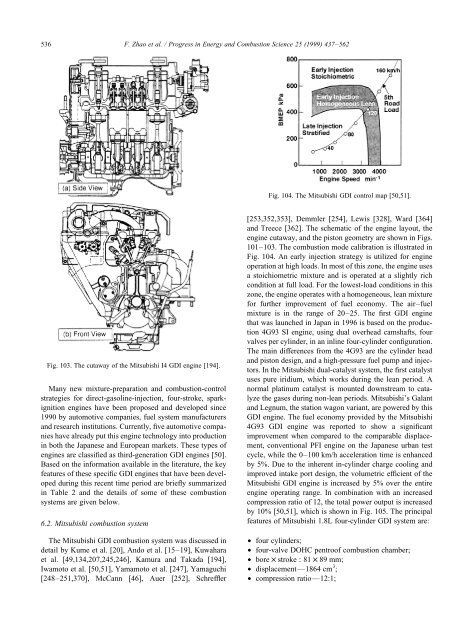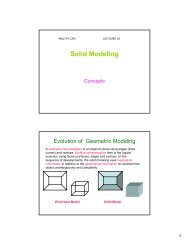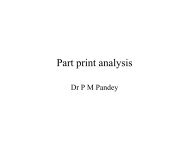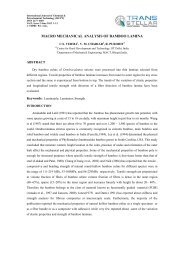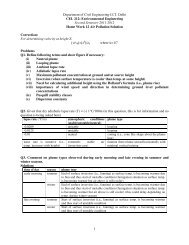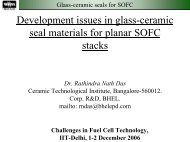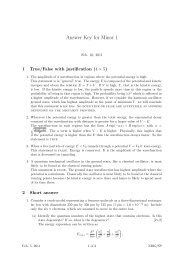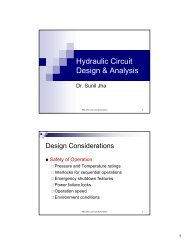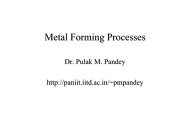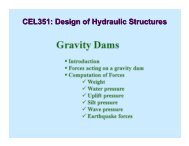Automotive spark-ignited direct-injection gasoline engines
Automotive spark-ignited direct-injection gasoline engines
Automotive spark-ignited direct-injection gasoline engines
You also want an ePaper? Increase the reach of your titles
YUMPU automatically turns print PDFs into web optimized ePapers that Google loves.
536<br />
Many new mixture-preparation and combustion-control<br />
strategies for <strong>direct</strong>-<strong>gasoline</strong>-<strong>injection</strong>, four-stroke, <strong>spark</strong>ignition<br />
<strong>engines</strong> have been proposed and developed since<br />
1990 by automotive companies, fuel system manufacturers<br />
and research institutions. Currently, five automotive companies<br />
have already put this engine technology into production<br />
in both the Japanese and European markets. These types of<br />
<strong>engines</strong> are classified as third-generation GDI <strong>engines</strong> [50].<br />
Based on the information available in the literature, the key<br />
features of these specific GDI <strong>engines</strong> that have been developed<br />
during this recent time period are briefly summarized<br />
in Table 2 and the details of some of these combustion<br />
systems are given below.<br />
6.2. Mitsubishi combustion system<br />
F. Zhao et al. / Progress in Energy and Combustion Science 25 (1999) 437–562<br />
Fig. 103. The cutaway of the Mitsubishi I4 GDI engine [194].<br />
The Mitsubishi GDI combustion system was discussed in<br />
detail by Kume et al. [20], Ando et al. [15–19], Kuwahara<br />
et al. [49,134,207,245,246], Kamura and Takada [194],<br />
Iwamoto et al. [50,51], Yamamoto et al. [247], Yamaguchi<br />
[248–251,370], McCann [46], Auer [252], Schreffler<br />
Fig. 104. The Mitsubishi GDI control map [50,51].<br />
[253,352,353], Demmler [254], Lewis [328], Ward [364]<br />
and Treece [362]. The schematic of the engine layout, the<br />
engine cutaway, and the piston geometry are shown in Figs.<br />
101–103. The combustion mode calibration is illustrated in<br />
Fig. 104. An early <strong>injection</strong> strategy is utilized for engine<br />
operation at high loads. In most of this zone, the engine uses<br />
a stoichiometric mixture and is operated at a slightly rich<br />
condition at full load. For the lowest-load conditions in this<br />
zone, the engine operates with a homogeneous, lean mixture<br />
for further improvement of fuel economy. The air–fuel<br />
mixture is in the range of 20–25. The first GDI engine<br />
that was launched in Japan in 1996 is based on the production<br />
4G93 SI engine, using dual overhead camshafts, four<br />
valves per cylinder, in an inline four-cylinder configuration.<br />
The main differences from the 4G93 are the cylinder head<br />
and piston design, and a high-pressure fuel pump and injectors.<br />
In the Mitsubishi dual-catalyst system, the first catalyst<br />
uses pure iridium, which works during the lean period. A<br />
normal platinum catalyst is mounted downstream to catalyze<br />
the gases during non-lean periods. Mitsubishi’s Galant<br />
and Legnum, the station wagon variant, are powered by this<br />
GDI engine. The fuel economy provided by the Mitsubishi<br />
4G93 GDI engine was reported to show a significant<br />
improvement when compared to the comparable displacement,<br />
conventional PFI engine on the Japanese urban test<br />
cycle, while the 0–100 km/h acceleration time is enhanced<br />
by 5%. Due to the inherent in-cylinder charge cooling and<br />
improved intake port design, the volumetric efficient of the<br />
Mitsubishi GDI engine is increased by 5% over the entire<br />
engine operating range. In combination with an increased<br />
compression ratio of 12, the total power output is increased<br />
by 10% [50,51], which is shown in Fig. 105. The principal<br />
features of Mitsubishi 1.8L four-cylinder GDI system are:<br />
• four cylinders;<br />
• four-valve DOHC pentroof combustion chamber;<br />
• bore × stroke : 81 × 89 mm;<br />
• displacement—1864 cm 3 ;<br />
• compression ratio—12:1;


